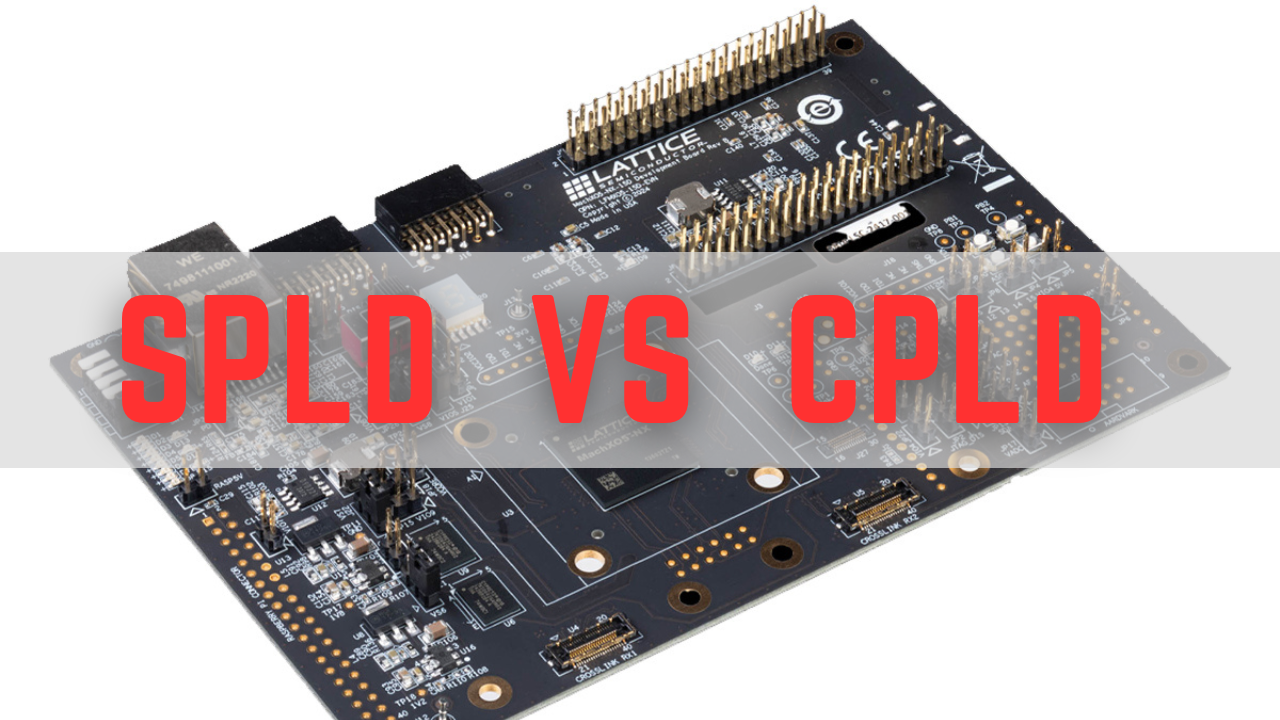
What is the difference between SPLD and CPLD?
Global electronic component supplier AMPHEO PTY LTD: Rich inventory for one-stop shopping. Inquire easily, and receive fast, customized solutions and quotes.
The difference between SPLD (Simple Programmable Logic Device) and CPLD (Complex Programmable Logic Device) lies in their complexity, architecture, and applications. Here’s a detailed comparison:

1. Definition & Complexity
| Feature | SPLD | CPLD |
|---|---|---|
| Full Form | Simple Programmable Logic Device | Complex Programmable Logic Device |
| Complexity | Basic (small-scale logic) | Moderate (medium-scale logic) |
| Gates | Few hundred to ~1,000 gates | ~1,000 to ~10,000 gates |
| Typical Use | Glue logic, small state machines | Larger FSMs, control logic, interfacing |
2. Architecture
| Feature | SPLD | CPLD |
|---|---|---|
| Structure | Single-level AND-OR arrays | Multiple PAL-like blocks + programmable interconnect |
| Macrocells | Few (e.g., 8–16) | Dozens (e.g., 32–512) |
| Flip-Flops | Limited or none | Many (for sequential logic) |
| Interconnect | Fixed routing | Flexible global interconnect |
Example Devices:
-
SPLD: PAL (Programmable Array Logic), GAL (Generic Array Logic), PROM.
3. Programmability
| Feature | SPLD | CPLD |
|---|---|---|
| Reusability | Often one-time programmable (OTP) | Reprogrammable (Flash/EEPROM) |
| Tools | Simple tools (e.g., PALASM) | Advanced (Quartus, ISE, Diamond) |
| Design Entry | Boolean equations, truth tables | HDL (VHDL/Verilog) + schematics |
4. Speed & Performance
| Feature | SPLD | CPLD |
|---|---|---|
| Speed | Fast (no interconnect delays) | Slightly slower (due to routing) |
| Determinism | High (predictable timing) | High but depends on routing |
| Clock Mgmt. | Basic (no PLLs) | May include clock dividers |
5. Applications
| Feature | SPLD | CPLD |
|---|---|---|
| Typical Uses | - Address decoding - Small combinational logic |
- State machines - UART/SPI controllers - Bus interfacing |
| Advantages | Low cost, low power, simple | More flexible, scalable |
6. Example Use Cases
-
SPLD:
-
Decoding a 3-bit address to enable one of 8 chips (74HC238 replacement).
-
Basic combinational logic (e.g.,
A AND (B OR C)).
-
-
CPLD:
-
Implementing a UART transmitter with FIFO buffering.
-
Managing a 7-segment display multiplexer for 4 digits.
-
Summary: When to Use Which?
-
Choose SPLD if:
-
You need simple, fixed logic (e.g., replacing 74-series ICs).
-
Cost/power are critical (e.g., consumer electronics).
-
-
Choose CPLD if:
-
You need sequential logic (counters, FSMs).
-
Flexibility and reprogrammability matter (prototyping, industrial control).
-
Evolution
-
SPLDs were predecessors to CPLDs.
-
Modern CPLDs blur into small FPGAs (e.g., Lattice MachXO3).
Practical Circuit Example: SPLD vs. CPLD for a 3-Bit Binary-to-7-Segment Decoder
This example demonstrates the differences between SPLD and CPLD when implementing a 3-bit binary-to-7-segment decoder to display numbers 0–7.
Task
Design a circuit that converts a 3-bit binary input (A2, A1, A0) into a 7-segment display output (a–g) for numbers 0–7.
1. Solution with SPLD (e.g., PAL16V8)
Truth Table & Equations
| Input (A2 A1 A0) | Output (a b c d e f g) | Display Pattern |
|---|---|---|
| 0 0 0 (0) | 1 1 1 1 1 1 0 | "0" |
| 0 0 1 (1) | 0 1 1 0 0 0 0 | "1" |
| ... | ... | ... |
| 1 1 1 (7) | 1 1 1 0 0 0 0 | "7" |
SPLD Implementation (PALASM Code):
a = !A2 & !A1 & !A0 # ... (Sum of minterms for a) b = !A2 & !A1 & A0 # ... ... g = A2 & A1 & A0 # Active only for "7"
Limitations:
-
No Flip-Flops → Combinational logic only.
-
Fixed AND-OR Matrix → Equations must fit the limited PAL structure.
2. Solution with CPLD (e.g., Xilinx CoolRunner-II)
VHDL Code with Optional State Machine
library IEEE; use IEEE.STD_LOGIC_1164.ALL; entity bin_to_7seg is Port ( clk : in STD_LOGIC; -- Optional for sequential extensions bin_in : in STD_LOGIC_VECTOR(2 downto 0); seg_out : out STD_LOGIC_VECTOR(6 downto 0) -- a–g ); end entity; architecture Behavioral of bin_to_7seg is begin process(bin_in) begin case bin_in is when "000" => seg_out <= "1111110"; -- 0 when "001" => seg_out <= "0110000"; -- 1 when "010" => seg_out <= "1101101"; -- 2 when "011" => seg_out <= "1111001"; -- 3 when "100" => seg_out <= "0110011"; -- 4 when "101" => seg_out <= "1011011"; -- 5 when "110" => seg_out <= "1011111"; -- 6 when "111" => seg_out <= "1110000"; -- 7 end case; end process; end Behavioral;
CPLD Advantages:
-
Flexible Macrocells → Supports both combinational and sequential logic.
-
Additional Features:
-
Pipelining (Output registers for better timing performance).
-
Scalability (e.g., adding auto-scrolling with a clock signal).
-
Comparison Table: SPLD vs. CPLD
| Criterion | SPLD (PAL16V8) | CPLD (CoolRunner-II) |
|---|---|---|
| Resources | 8 Fixed Macrocells | 32–256 Flexible Macrocells |
| Timing Control | No Clocking | Global Clock Networks |
| Debugging | Limited Test Pins | JTAG, Signal Sniffing |
| Power Consumption | Very Low (~10 mA) | Higher (~50–100 mA) |
When to Use Which
-
SPLD:
-
For static, simple decoding (e.g., replacing a 74HC4511).
-
Ultra-low-power applications (battery-operated devices).
-
-
CPLD:
-
For scalable designs (e.g., future features like display blinking).
-
Prototyping or complex state machines.
-
Visual Representation
SPLD:
[3-Bit Input] → [Fixed AND-OR Matrix] → [7-Segment Output]
CPLD:
[3-Bit Input] → [Programmable Macrocells]
→ Combinational Logic
→ OR
→ Clocked Registers → [7-Segment Output]
